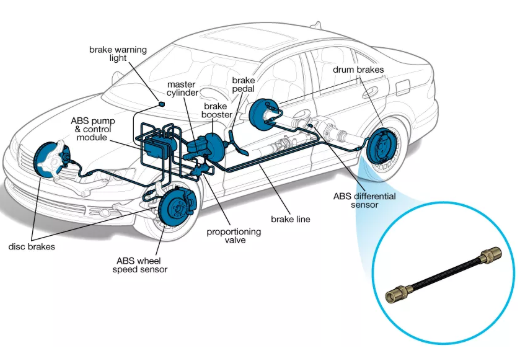CuNi10, an alloy of 90% copper and 10% nickel, is especially noted for low resistivity and high resistance to oxidation and chemical corrosion. Due to its corrosion resistance edge, this copper nickel alloy are used in automotive vehicles.

Copper-nickel alloy, CuNi10, is inherently corrosion resistant to road salt, and its use as brake tubing is increasing based on changing life-expectancy for automotive vehicles and increasing cost of corrosion-retarding coatings for steel brake tubing. Automobile use habits serve as an unspoken directive to manufacturers to continue their efforts in providing cars with extended lives.
Prior to 1930, copper and brass, having excellent inherent pressure containing and anti-corrosion characteristics, were the materials of choice for brake tubing. By post World War II, automotive industry mass production economics dictated adoption of a low-cost form of double wrapped, furnace-brazed steel tubing that is still in use today worldwide. An inherently corrosion-resistant tubing material is the only way to insure continuing effective corrosion resistance.

Apart from automotive vehicle, copper nickel alloy used for low-value resistors, heating wires and mats in heating cords, cables with low conductor temperatures, as well as for tube-weldings. Flat wires and stranded wires are used for protective switching. The max working temperature in air is +400℃. Here we take a example for use in automotive vehicle.
Attending exhibitions, focusing on industry devolpment trend and new technologies,Nexteck Technology Limited keeps pace with the times ,exploring and innovating so as to achievingcontinous development.
TAG: copper nickel alloy




